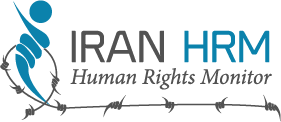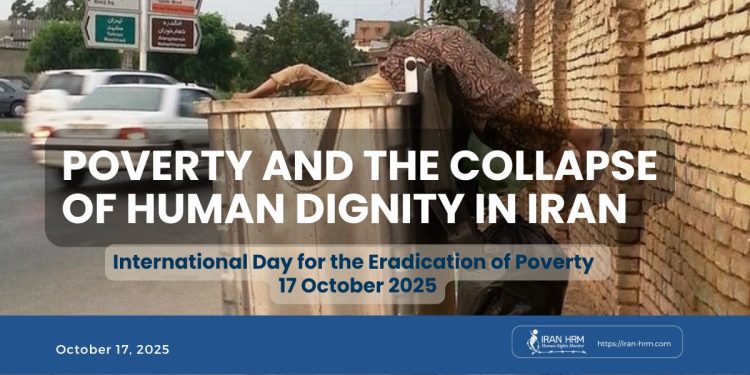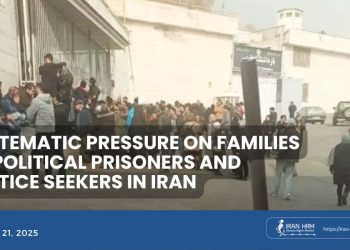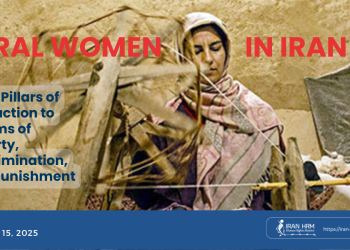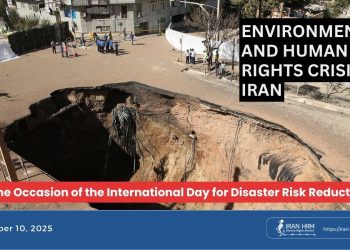While the world marks the International Day for the Eradication of Poverty with renewed commitments to justice and human dignity, Iran faces a crisis far deeper than a lack of resources. Poverty in Iran today is not merely an economic condition but a manifestation of systemic human rights violations, where the rights to life, food, housing, education, and health are denied to millions, and human dignity is systematically destroyed.
The Scale of the Crisis: The Gap Between Official Data and Reality
Official bodies such as the Research Center of the Iranian Parliament (Majlis) and the Ministry of Cooperatives, Labour, and Social Welfare estimate that around 30 percent of the population—some 25 to 26 million people—live below the poverty line. However, data derived from domestic sources and admissions by the regime’s own economists paint a much darker picture. According to these analyses, over 40 million Iranians live in absolute poverty, and nearly 70 percent of the population fall below the relative poverty line. A university economist affiliated with the regime admitted that “a vast majority of Iranians are unable to meet even their most basic needs such as food and housing.” This reality shows that poverty in Iran has become a matter of physical survival rather than an issue of income.
The Collapse of the Middle Class and Widening Social Divide
According to the Statistical Center of Iran, the Gini coefficient—a key indicator of inequality—rose to 0.397 in 2023, marking the highest level of income disparity in recent years. Studies by the Parliament’s Research Center also show that between 2012 and 2019, the size of Iran’s middle class shrank by about 11 percent each year, with over 20 percent of this group sliding into poverty. Today, Iranian society is polarized into two sharply divided classes: a small elite of wealthy individuals and institutions tied to the regime, including Revolutionary Guard commanders, foundation directors, and those benefiting from oil, land, and import monopolies; and a vast majority of workers, retirees, teachers, and low-income employees living below the poverty line. Member of Parliament Mohammad Bagheri Benabi acknowledged that the poverty threshold in Tehran has exceeded 30 million tomans per month, while the official minimum wage—including benefits—barely reaches 17 million tomans. This widening gap reflects a rentier and corrupt economic system where wealth is extracted from production and labor and concentrated into the hands of the regime’s inner circle.
Inflation, Food Insecurity, and the Erosion of Livelihoods
Runaway inflation has pushed millions of families to the brink of collapse. According to official outlets such as Eghtesad News and ILNA (October 2025), the price of red meat has surpassed one million tomans per kilogram, dairy prices have risen by over 80 percent, and bread has soared by nearly 95 percent. Data from the UN Food and Agriculture Organization (FAO) indicate that 41 percent of Iranians suffer from moderate or severe food insecurity, and 36 million people cannot afford a healthy diet. Protein consumption among low-income households has dropped to less than once a week. In this context, mere survival has replaced human life, and poverty has become a symbol of institutionalized injustice.
Structural Roots: Corruption and Mismanagement
Regime-linked economists such as Hossein Raghfar and Farshad Momeni have publicly admitted that Iran’s economic collapse stems primarily from domestic corruption and systemic mismanagement, not from sanctions. Raghfar stated, “Price hikes in Iran have never led to development; they only serve to plunder the people and enrich the ruling oligarchy.” Momeni similarly warned, “Food prices have risen by 82 percent; people’s tables are empty while the rulers play with the zeros on the currency.” These admissions confirm that poverty in Iran results directly from the rentier economy, monopolization, and prioritization of military and ideological spending over citizens’ basic needs.
Social Consequences: Corruption, Crime, and a Lost Generation
Widespread poverty has not only shattered livelihoods but also disintegrated Iran’s social fabric. Corruption: Poverty and distrust have fueled both petty and systemic corruption, from bribery and smuggling to tax evasion and monopolistic profiteering. Crime and violence: According to reports from the Judiciary and National Police, violent crime, domestic violence, and theft reached record highs in 2023, directly linked to unemployment and economic despair. Illiteracy and child labor: Official figures from the Ministry of Education indicate that over 3.2 million children are out of school, while at least two million child laborers work across the country, many in hazardous conditions. Child marriage and gender-based inequality: In impoverished provinces such as Sistan and Baluchestan, forced and early marriages among girls under 15 have sharply increased. This data reveals that poverty in Iran is not merely economic—it is cultural, educational, and moral. It perpetuates a multigenerational cycle of deprivation that endangers the future of the nation itself.
International Context and Global Reactions
In her 2022 report, Alena Douhan, the UN Special Rapporteur on the negative impact of unilateral coercive measures, acknowledged that sanctions have worsened Iran’s humanitarian conditions. Yet she also noted that domestic corruption and poor governance are the primary drivers of poverty and inequality. While the regime blames sanctions for all crises, official data demonstrate that poverty and inequality were already rising before the intensification of sanctions. Reports by the United Nations Development Programme (UNDP) have placed Iran’s Human Development Index below the regional average, reflecting chronic inequality and lack of inclusive growth.
Conclusion and International Call to Action
The pervasive poverty in Iran today constitutes a humanitarian and human rights crisis. More than half of the population lives below the poverty line, millions of children are deprived of education and nutrition, and the middle class—the backbone of social stability—has been annihilated. Under such conditions, calls for reform within the system are meaningless. The ruling regime in Iran is itself the architect and beneficiary of poverty. Therefore, the international community must act urgently: Establish an independent fact-finding mission under the UN Human Rights Council to investigate structural poverty and corruption; impose targeted sanctions on institutions and individuals responsible for looting public resources; support civil society organizations and independent Iranian media that expose corruption and social injustice; and channel humanitarian aid through non-governmental pathways to reach vulnerable families, women, and children without regime interference. On this International Day for the Eradication of Poverty, the cry of the Iranian people demands a global response: As long as systemic poverty, corruption, and repression persist in Iran, human dignity remains an illusion.
